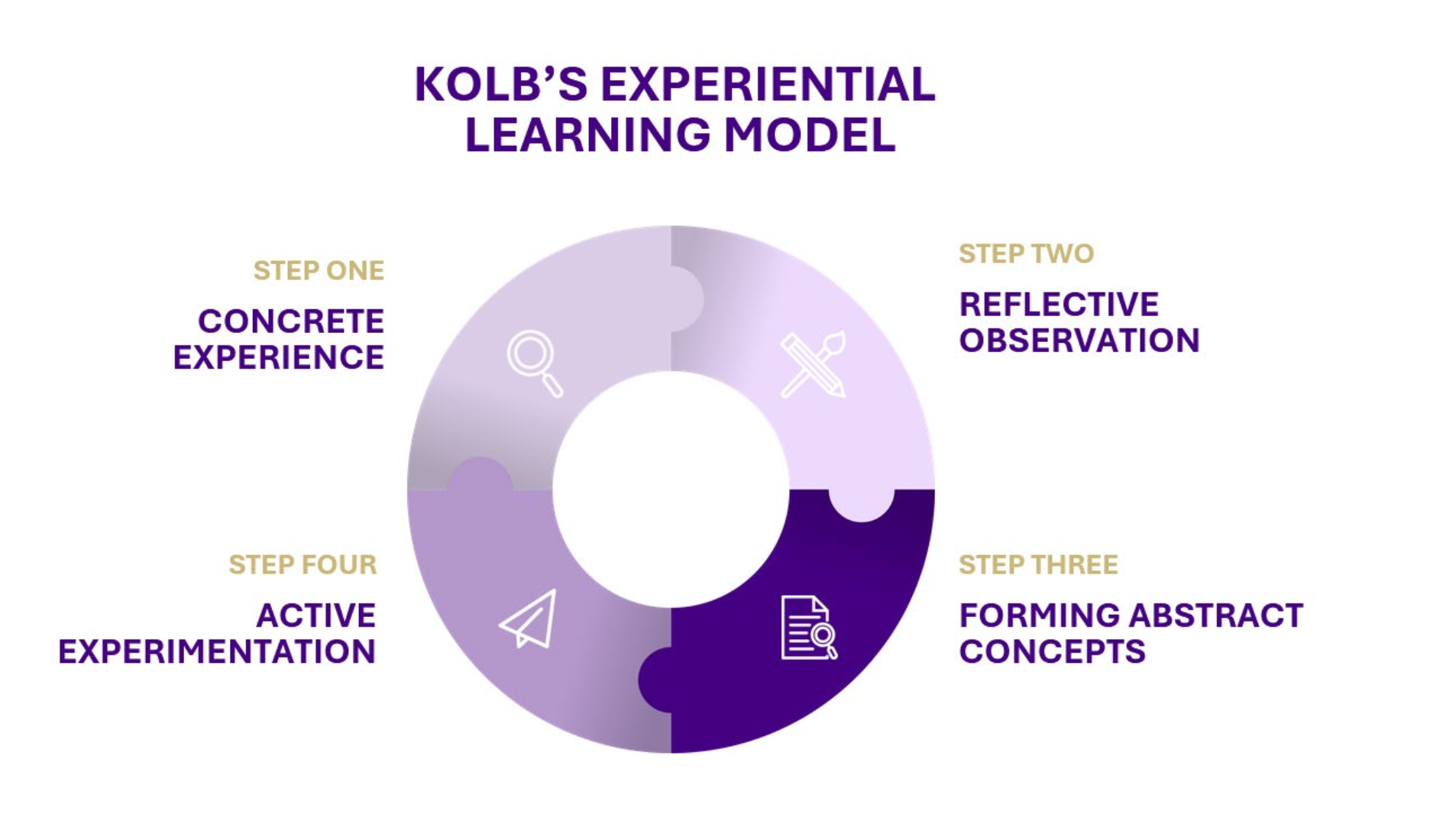John Dewey believed that learning came not merely from experience, but by reflecting on that experience. The role of reflection is vital for experiential learning.
Kolb's Experiential Learning Model
David A. Kolb’s experiential learning model as shared in 1984 book, Experiential Learning: Experience as the Source of Learning and Development, is a widely accepted pedagogical framework that emphasizes the cyclical nature of learning through experience. It supports the kind of deep, integrative learning that work-based experiences are intended to foster. Faculty can use this model to design assignments, structure reflection, and assess student growth.

The model includes four interrelated stages:
Concrete Experience
Students engage directly in an applied activity—whether an internship, a team project for an external partner, a simulation, or a field-based role.
Reflective Observation
Students are prompted to reflect on what happened during the experience: What did they notice? What worked well? What was challenging?
Abstract Conceptualization
Students connect their experience to broader disciplinary knowledge, course concepts, or professional frameworks. This stage helps move from “doing” to “understanding.”
Active Experimentation
Students apply what they’ve learned to new contexts—either during the current course or in future experiences. This might include revising their approach, planning next steps, or adapting their strategies.
Designing a Course Using the Kolb's Learning Model
Faculty can design courses in such a way that gives students the opportunity to move through the full cycle. For example, an embedded course project with an external partner might serve as the concrete experience, a guided reflection paper might support reflective observation, a class discussion might tie the experience to theory, and a final project or presentation might help students articulate how they would apply what they’ve learned.
Using Kolb’s model can also support consistency in assessment across departments while giving faculty freedom to adapt based on disciplinary needs. It ensures that WBLEs are structured opportunities to learn, grow, and prepare for life after college.
Alternative Experiential Learning Models
In addition to Kolb's Experiential Learning model, the Community Engagement and Volunteer Center (CEVC) provides additional resources about promoting reflection.
Another relevant learning model is Preparation, Action, Reflection, and Evaluation (PARE), which some faculty may prefer, especially if they are implementing community-engaged learning (CEL), also called service learning, as their WBLE.
